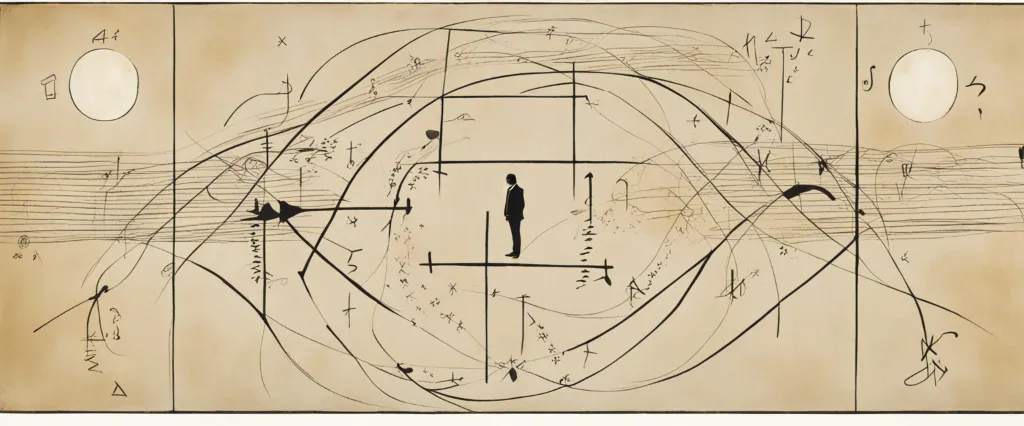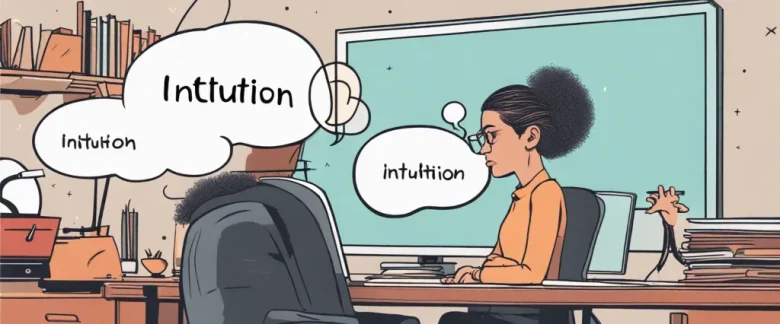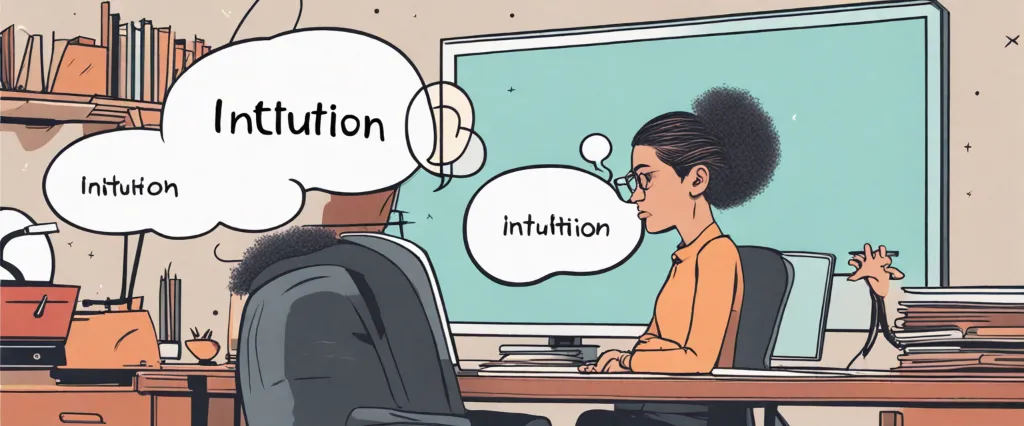In her eye-opening book, “Inferior,” acclaimed author Angela Saini challenges long-held stereotypes and biases regarding women’s intelligence, biology, and societal roles. Saini, a British science journalist, dives deep into the realm of scientific research, unearthing a rich history of flawed studies and biased assumptions that have perpetuated the notion of female inferiority. With meticulous research and compelling storytelling, Saini presents a revolutionary narrative that highlights the groundbreaking discoveries of modern scientists reshaping our understanding of gender differences.
Chapter 1: The Myth of Male and Female Brains
Chapter 1 of “Inferior” by Angela Saini, titled “The Myth of Male and Female Brains,” challenges the widely held belief that men and women possess fundamentally different brains. Saini begins by highlighting historical examples that shaped the notion of gender differences in intelligence, such as the flawed studies of scientists like Cesare Lombroso and Paul Broca.
The chapter proceeds to examine contemporary research on brain differences, revealing that many studies have failed to establish clear distinctions between male and female brains. Saini highlights the limitations of early research, which often utilized small sample sizes and overstated the significance of minor anatomical differences.
Saini further dissects studies that claimed to find sex-based disparities in cognitive abilities, showing that they often rested on biased interpretations and assumptions. For instance, a meta-analysis conducted by Diane Halpern suggests that the differences found are small and not consistently replicable across studies.
The author explores the role of cultural influences on brain development, emphasizing that educational and societal factors can shape cognitive abilities more significantly than biological factors. She discusses studies that demonstrate the malleability of gender stereotypes and their impact on cognitive performance and career choices.
By examining neuroplasticity, Saini explains how experiences, including social and environmental factors, can impact brain development and debunk the myth of fixed gender differences. She acknowledges certain neurological variations between individuals, but argues that categorizing these differences as strictly male or female oversimplifies the complex reality.
Overall, Chapter 1 challenges the widespread assumption of inherent cognitive disparities between genders, highlighting the need for more rigorous research to disentangle the complex interplay between biology, culture, and individual experiences.
Chapter 2: The Myth of Testosterone
Chapter 2 of “Inferior” by Angela Saini, titled “The Myth of Testosterone,” examines the belief that testosterone is a dominant factor in explaining the differences between men and women. Saini challenges the notion that testosterone is solely responsible for behaviors typically associated with males, such as aggression and competitiveness. She also highlights the dangers of oversimplifying complex biological and social interactions.
Saini begins by explaining how testosterone was celebrated as the “male hormone” and credited with characteristics like risk-taking and dominance. However, she later reveals that research does not support these generalizations. She emphasizes that levels of testosterone can vary significantly among men, providing evidence that counters the assumption that all men exhibit the same behavior due to this hormone.
The author delves into the biological and neurological research that debunks the testosterone myth. Saini asserts that many gender differences are shaped by a combination of hormones, genes, and social conditioning, rather than testosterone alone. She cites studies that demonstrate how testosterone levels are influenced by environmental factors and how social context can impact behavior.
Additionally, Saini highlights evidence from societies that defy the testosterone stereotype, such as the matrilineal Aka people of Central Africa, who experience gender roles and behaviors distinct from the expectations associated with testosterone levels. This challenges the notion that testosterone is inherently linked to aggression and dominance.
Ultimately, Saini argues for a more nuanced understanding of the role of testosterone and rejects the oversimplification of the hormone’s influence. She urges readers to question predominant narratives and explore the interconnectedness of biology and social construction when considering the differences between men and women.
Chapter 3: The Myth of the Default Human
Chapter 3 of Angela Saini’s book “Inferior” is titled “The Myth of the Default Human.” In this chapter, Saini explores how society has traditionally perceived men as the default human beings, and women as the exceptions or deviants from this default. She examines the historical and scientific narratives that have contributed to this bias, shedding light on how it has influenced our understanding of gender differences.
Saini starts by delving into the portrayal of male as the norm in scientific and medical research. She discusses how studies often focus more on male subjects, interpreting their results as applicable to both sexes, assuming that women are simply deviations from the standard. She cites examples from the field of cardiology, where heart disease symptoms in women were misunderstood and often misdiagnosed because research had primarily been conducted on men.
The author also explores how evolutionary psychology has contributed to the perception of male as the default human. She uncovers research that has reinforced traditional gender stereotypes, suggesting that women are inherently more nurturing and caring, while men are naturally competitive and aggressive. Saini criticizes these theories for oversimplifying complex biological and social factors, which can contribute to gender differences in behavior and preferences.
Saini challenges the notion of male as the default human by highlighting various scientific studies that reveal the diversity within both sexes. She discusses research that shows significant individual variation in traits such as empathy and aggression, debunking the idea that any gender can be considered universally “normal.”
Overall, Chapter 3 of “Inferior” dismantles the myth of the default human and exposes the flaws in scientific narratives that reinforce gender biases. It emphasizes the importance of comprehensive research and an understanding that gender differences are more nuanced and variable than previously believed.
Chapter 4: The Myth of the Natural

Chapter 4 of “Inferior” by Angela Saini is titled “The Myth of the Natural.” In this chapter, Saini delves into the historical and cultural factors that have contributed to the belief in innate gender differences, particularly in relation to intelligence and cognitive abilities.
Saini begins by discussing the works of early scientists and philosophers who fueled the idea of gender differences based on flawed studies and biased assumptions. She highlights how these early beliefs laid the foundation for subsequent research that perpetuated the notion of women’s intellectual inferiority.
Saini then explores the theory of “neurosexism,” which argues that differences in male and female brains account for disparities in intellectual abilities. However, she meticulously dissects the flaws and limitations of studies that support this theory, emphasizing the vast overlap and individual variations in brain structures between men and women.
The author also scrutinizes the role of cultural and societal factors in shaping gender differences. She exposes how socialization, gender stereotypes, and expectations can heavily influence individual choices, opportunities, and achievements. Saini presents studies that demonstrate how cultural biases and discrimination lead to artificial disparities in fields such as science, technology, engineering, and mathematics.
Furthermore, Saini challenges the notion that women’s contributions to scientific discoveries are often ignored or overshadowed. She highlights overlooked female pioneers in various scientific fields and emphasizes the importance of recognizing and celebrating their work.
In conclusion, Saini emphasizes that the idea of innate gender differences in intelligence is largely a myth perpetuated by biased research, cultural biases, and societal expectations. She advocates for a more nuanced understanding of gender differences and acknowledges the importance of equality in opportunities and representation in all areas of society.
Chapter 5: The Myth of the Female Brain
Chapter 5: The Myth of the Female Brain of the book “Inferior” by Angela Saini challenges the popular notions surrounding gendered brain differences. Saini questions societal beliefs that women’s brains are fundamentally wired differently from men’s, leading to innate differences in abilities and behaviors.
The chapter begins by exploring the historical and scientific roots of the theory of gendered brain differences. Saini highlights how this theory has been used to perpetuate the idea that women are innately inferior to men in various intellectual domains. She reveals how this belief has been shrouded in pseudoscience and misinterpreted research, often perpetuated by influential figures and popular media.
Saini then delves into the emerging field of neuroscience, which challenges these preconceived notions. She discusses several cutting-edge scientific studies that reveal no substantial differences between male and female brains in terms of cognitive abilities or emotional processing. In fact, many of the perceived gender differences in abilities, such as spatial cognition or mathematical skills, can be attributed to social and cultural factors rather than biological disparities.
Furthermore, Saini explores the important role of neuroplasticity, stressing how the brain has the ability to adapt and rewire itself throughout an individual’s life. She argues that promoting the idea of gendered brain differences can limit women’s potential by reinforcing stereotypes and discouraging them from pursuing certain fields or careers.
In conclusion, Chapter 5 of “Inferior” challenges the widely accepted myth of the female brain. Saini emphasizes that any cognitive variations between individuals are a result of complex interactions between biology, culture, and environment, rather than inherent gender differences. This chapter serves as a call to critically examine and debunk long-standing assumptions surrounding the supposed inferiority of women’s brains.
Chapter 6: The Myth of the Maternal Instinct
Chapter 6 of “Inferior” by Angela Saini is titled “The Myth of the Maternal Instinct.” In this chapter, the author challenges the long-standing belief that women have a natural and innate instinct for nurturing and motherhood.
Saini begins by examining the historical and cultural origins of the idea of the maternal instinct. She highlights how this notion was perpetuated by influential figures like Sigmund Freud and evolutionary biologist Robert Trivers, whose theories emphasized women’s natural inclination towards caregiving and child-rearing due to their reproductive capacities.
However, Saini argues that these ideas are oversimplified and overlook the complex interplay of genetics, culture, and individual preferences in determining women’s desire and ability to be mothers. She presents a range of scientific studies that suggest there is no single “maternal instinct” but rather a diverse spectrum of maternal behaviors and attitudes influenced by various factors.
Moreover, Saini delves into the detrimental consequences of the maternal instinct myth. She discusses how this societal expectation often places unfair burdens on women, limiting their opportunities in other areas of life and reinforcing gender inequalities in the workplace.
The author also challenges the notion that men lack a paternal instinct. She explores research that shows men can be just as nurturing and involved in caregiving as women when given the opportunity and support.
Overall, Chapter 6 seeks to dismantle the popular idea of the maternal instinct as a biological imperative for all women. Saini emphasizes the importance of acknowledging individual differences and promoting gender equality by challenging deeply ingrained stereotypes and dismantling the pressures placed on women to conform to traditional gender roles.
Chapter 7: The Myth of the Sexes
Chapter 7: The Myth of the Sexes explores the notion that there are inherent and biologically determined differences between men and women, specifically in relation to their brains and behavior. Angela Saini challenges the prevalent theories that suggest women are naturally more emotional, nurturing, and empathetic, while men are more logical, analytical, and competitive.
Saini begins by discussing the work of Simon Baron-Cohen, a psychologist who proposes that men possess a natural inclination for systemizing, whereas women are more inclined to empathize. Baron-Cohen argues that this biological difference explains why men are overrepresented in fields like engineering and women in caregiving professions. However, Saini highlights the flawed scientific methodologies used to support this research, as well as the biases and assumptions that underpin its conclusions.
Furthermore, Saini examines brain imaging studies that claim to reveal male-female differences in brain structure and function. She demonstrates that while there may be some differences, they are often exaggerated and do not necessarily translate into significant disparities in cognitive abilities or behavior. Moreover, these studies fail to consider the role of societal influences, which heavily shape gender roles and expectations from an early age.
Saini also delves into the controversial topic of sex differences in intelligence. She debunks the myth that women have lower intellectual abilities than men, citing numerous studies that show there is no innate cognitive advantage for either sex. Any observed disparities in specific abilities are more likely to be attributed to cultural, environmental, or educational factors, rather than inherent biological dissimilarities.
In conclusion, Chapter 7 of Inferior thoroughly critiques the pervasive myths surrounding male-female differences and demonstrates how they are often based on flawed research and biased interpretations. Society’s understanding of gender should be more nuanced, recognizing that individuals’ capabilities and interests can vary widely regardless of their sex.

Chapter 8: The Myth of Progress
Chapter 8 of “Inferior” by Angela Saini, titled “The Myth of Progress,” examines the role of science and biology in perpetuating the idea that women are inherently inferior to men. Saini explores how science has been used historically to reinforce gender stereotypes and justify the unequal treatment of women.
The chapter begins by delving into the relationship between science and eugenics during the late 19th and early 20th centuries. Saini highlights how prominent scientists like Charles Darwin and Francis Galton used their theories to support the notion that women were intellectually and physically inferior to men. She explains how eugenics was used as a tool to control and limit women’s reproductive rights, often targeting marginalized communities, such as the working class and people of color.
Saini then shifts her focus to modern research conducted on gender differences in intelligence, finding that much of it is flawed and often influenced by bias. She argues that the way brains are studied often overlooks sociocultural elements and gives disproportionate importance to gender differences rather than similarities.
Furthermore, the chapter discusses the rise of evolutionary psychology, which Saini argues has contributed to the persistence of gender stereotypes. She criticizes evolutionary psychologists for their reductionist approach, focusing excessively on biological differences between males and females while largely ignoring the significant impact of culture and social factors.
Overall, Chapter 8 of “Inferior” exposes the historical and ongoing use of science to justify the subjugation of women. It reveals the need to critically analyze scientific research and highlights the importance of challenging outdated gender stereotypes that persist in society.
After Reading
In conclusion, Angela Saini’s book Inferior provides a thought-provoking exploration of the science behind the idea of female inferiority. Through extensive research and analysis, Saini debunks long-standing myths and stereotypes surrounding women’s intelligence, physical abilities, and emotional capacities. She exposes the systemic biases and discrimination that have influenced scientific studies and reinforces the need for gender equality in all aspects of society. With her compelling arguments and compelling evidence, Saini challenges readers to question societal norms and strive for a more inclusive and equitable world for all genders.
1. “Invisible Women: Data Bias in a World Designed for Men” by Caroline Criado Perez – This book delves into the gender data gap and how it influences various aspects of women’s lives, including healthcare, employment, and transportation. It challenges the biased assumptions that have perpetuated inequality and offers insightful perspectives on the need for change.
2. “The Gendered Brain: The New Neuroscience that Shatters the Myth of the Female Brain” by Gina Rippon – In a compelling exploration of neuroscience, Rippon challenges the notion of inherent gender differences in the brain. She dismantles long-held stereotypes and presents evidence that demonstrates how societal influences shape our understanding of gender differences in intelligence, emotions, and behavior.
3. “Weapons of Math Destruction: How Big Data Increases Inequality and Threatens Democracy” by Cathy O’Neil – O’Neil shines a light on the algorithms that govern our lives and how they can reinforce discrimination. By revealing the hidden biases in data-driven decision-making processes, she shows how these systems perpetuate inequality, urging readers to critically question and transform these structures.
4. “Superior: The Return of Race Science” by Angela Saini – From the same author as “Inferior,” this book tackles the resurgence of race science and its impact on society. Saini exposes the flawed theories that underpin racial superiority and elucidates the historical and contemporary consequences of this pseudoscience.
5. “Unfinished Business: Women Men Work Family” by Anne-Marie Slaughter – Slaughter, a prominent feminist writer and public policy expert, explores the persisting challenges faced by women in achieving work-life balance and gender equality. Drawing from her personal experiences and extensive research, she offers thought-provoking insights on how society can truly support women’s aspirations and bridge the inequality gap.




